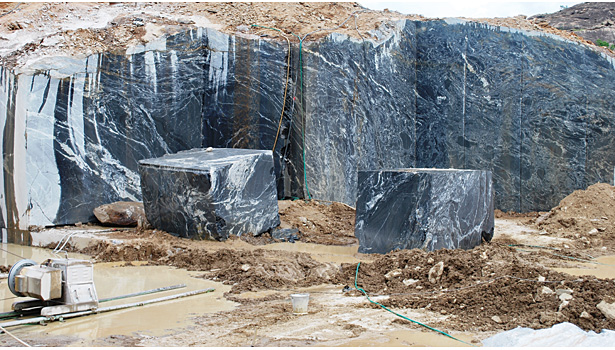Introducing the Mysteries of Granite Quarrying: Where Strength and Beauty Meet
The globe of granite quarrying is a world where the raw strength of nature assembles with human virtuosity to develop structures that stand the test of time with an air of sophistication. From the depths of quarries to the precise sprucing up in workshops, the procedure of transforming granite into architectural wonders is an intricate dancing of tradition and development. As we peer into the midsts of this old craft, we start to uncover the covert complexities that form the really significance of our constructed environment.
The Origins of Granite Quarrying
In the annals of architectural history, the origins of granite quarrying are shrouded in a tapestry of ancient craftsmanship and geological marvels. Dating back to ancient Egypt and Mesopotamia, the extraction of granite from quarries marked the beginning of a journey that would ultimately cause the production of several of the globe's most legendary frameworks.
Granite quarrying's origins can be mapped to the knowledgeable craftsmens that identified the rock's longevity and visual allure. With a mix of primitive tools and large resolution, these early quarry employees unearthed granite blocks that would become the foundation of civilizations.
As human beings advanced, so did the techniques of quarrying granite. The Romans, renowned for their design prowess, created innovative methods for removing granite to create monuments, holy places, and roads that stood the examination of time.
The legacy of these ancient quarrying methods continues to form modern-day design, with granite staying a symbol of strength and elegance in construction tasks around the world. (granite quarries in south africa)
Tools of the Quarrying Profession
The development of granite quarrying methods from ancient human beings to contemporary times highlights the vital role played by the devices of the quarrying profession in shaping the sector's methods. In old times, quarrying devices were basic, often containing blades, hammers, and wedges made from products like bronze or iron. These tools required considerable manpower and time to remove granite blocks from quarries.

Additionally, the introduction of pneumatic tools and high-powered machinery has actually significantly reduced the physical labor required in quarrying operations, enhancing employee safety and security and performance. As the quarrying sector proceeds to introduce, the tools of the trade remain at the forefront of driving progress and forming the future of granite removal.
Drawing Out Blocks of Granite
Utilizing accuracy machinery and progressed methods, the extraction of granite obstructs from quarries has come to be an advanced process in the contemporary quarrying industry. Regulated blasting strategies are then used to break apart the granite right into workable areas.

Sprucing Up and Finishing Strategies
To attain a flawless surface area on granite blocks, experienced craftsmens use a series of careful polishing and completing strategies. After the initial removal and forming processes, the granite blocks undertake a comprehensive sprucing up stage to enhance their natural elegance and resilience.
Along with sprucing up, completing strategies are put on further fine-tune the granite's look. These techniques may include flaming, refining, or cleaning, each offering unique structures and surfaces to match various aesthetic preferences. Flaming, for example, includes revealing the granite surface area to high temperatures to create a rough, textured surface, perfect for exterior applications where slip-resistance is essential. Developing, on the other hand, supplies a matte surface that is smooth to the touch, excellent for interior kitchen counters and floor covering. By carefully selecting and applying these polishing and finishing techniques, artisans can transform raw granite blocks into beautiful pieces that showcase both strength and elegance.

Ecological Impact and Sustainability
With the expanding emphasis on environmental awareness in the industry, granite quarrying techniques are increasingly looked at for their effect on all-natural sources and long-lasting sustainability. Quarrying for granite can have substantial environmental ramifications. The removal process usually involves making use of hefty machinery, dynamites, and huge amounts of water, causing environment destruction, soil disintegration, and water air pollution. Additionally, the transport of granite from quarries to refining centers generates carbon discharges, better adding to environmental deterioration. granite quarries in south africa.
To reduce these effects and make sure sustainability in granite quarrying, market stakeholders are taking on numerous actions. Implementing innovative innovations to minimize power consumption and water usage, reclaiming quarried additional info land for environmental restoration, and promoting responsible sourcing methods are some approaches being employed. Qualifications such as the Forest Stewardship Council (FSC) and the Leadership in Power and Environmental Style (LEED) help consumers identify eco pleasant granite products.
Conclusion
Finally, granite quarrying is a process that requires specialized devices and techniques to remove blocks of granite and polish them to a high degree of surface. While the environmental influence of quarrying can be considerable, initiatives are being made to enhance sustainability practices in the market. Overall, granite quarrying is a fragile balance in between utilizing the toughness and beauty of this all-natural stone while decreasing its click here to find out more effect on the setting.